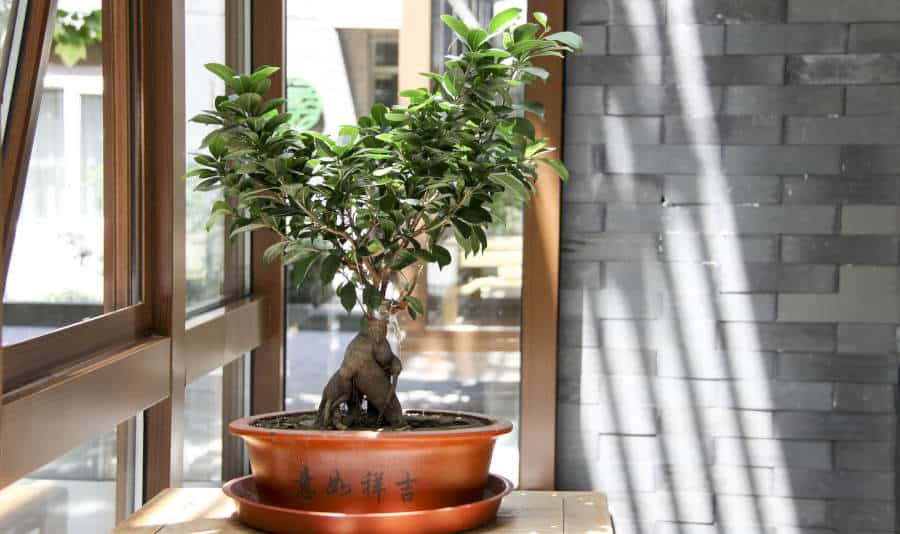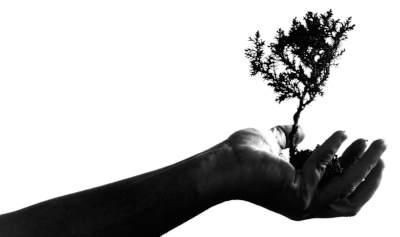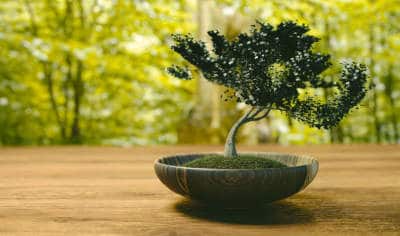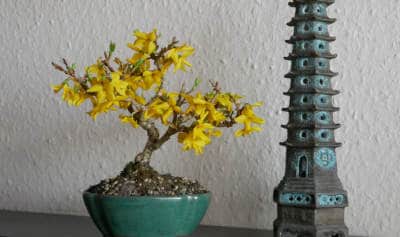Can Bonsai Trees Be Kept Indoors?

Since bonsai trees are small, and look beautiful, you might be tempted to keep your bonsai trees indoors just like any other houseplant.
Also, bonsai trees are popular for their artistic value, and you can admire them as art just like any other objets d’art you might own in your home. Having bonsai trees around your home or office is also thought to have a calming effect on people.
So it makes sense that you might want to bring your bonsai trees indoors, or grow bonsai trees specifically to keep indoors.
You need to be careful though – a lot of bonsai trees don’t like to be kept indoors. Even those trees that don’t mind being inside still need special care.
So, can bonsai trees grow indoors? Bonsai trees can be grown indoors but you need to consider that they are used to varying temperatures and day length through the year when growing as natural trees. Trees that originate in tropical or sub-tropical areas tend to do better, and need less special care, when grown indoors. Examples of this type of tree include Ficus trees.
There are no indoor trees in nature. This means that there are a few things to think about before you try to keep your bonsai trees inside. We’re going to have a look at some of them here.
Temperate Bonsai Trees Are Happiest Outdoors
The types of tree that are traditionally used for bonsai originate from parts of the world in the temperate zones or latitudes. This means that these trees are used to growing in a climate where the there are four seasons – spring, summer, autumn and winter, in case you weren’t sure ;-).
The seasonality brings with it seasonal factors like temperatures and day length. So these trees depend on changing temperature and day length to provide them with signals about what they should be doing at various times of the year.
Some people mistakenly think that this only applies to deciduous trees, the ones that lose their leaves in the fall, and that evergreen trees aren’t affected. Evergreen trees rely on these temperature and light cycles too.
If you try to grow these traditional bonsai trees indoors, where the temperature and light are pretty much the same all year round, then the trees can start to have problems. In addition, the levels of light indoors can be too low for the needs of the trees.
It’s only those trees that originate from tropical, or sub-tropical, areas that don’t seem to depend on these light and temperature cues, which enables them to thrive indoors.
How Can Being Inside Cause Problems for Bonsai Trees?
Because many of the trees used for bonsai depend on temperature and light variation cues, they can become less healthy if you try to grow them indoors.
Trees can depend on on low temperatures to make them become dormant for the winder period. Short day length can also signal to the tree that it is time for a rest, and deciduous trees may lose their leaves.
Without the cold temperatures and shortening day length the trees don’t receive the signal to become dormant. This also means they aren’t prepared for the production of new buds and shoots as the temperature starts to rise as the new growing season approaches.
This chilling, followed by warming, is needed to trigger the production of chemical signals within the trees that stimulate bud development and flowering.
How Can You Help Your Bonsai Trees to Live Indoors?
So, what if you really want to keep your traditional bonsai trees indoors? What can you do to help them to thrive?
Provide as much natural light as possible
Providing as much natural light as possible will help to provide the day-length triggers that trees can depend on. This would mean placing the trees near as big a window as possible, which will help to provide the tree with the sunlight it needs for photosynthesis, as well as daily alternating light and dark and annual day-length cycles.
Provide Trees with Some Access to Outside Ambient Temperatures
Placing your bonsai trees close to a window can also help to keep the tree in touch with changing temperature over the course of the year. Modern home insulation and double-glazing mean that the indoor temperature tends to be fairly constant, but the temperature near windows can still be lower in the winter, which could help a bit.
It’s still not ideal though, and trees can depend on near-freezing temperatures to trigger normal development processes.
Control Watering and Humidity
Providing bonsai trees with water always seems to be a bit of a balancing act. One of the reasons that this can be more challenging that for other plants is that bonsai trees usually grow in fairly small pots that don’t contain much soil.
The small amount of soil means that it can dry out fairly easily if you don’t keep an eye on it. But if you over-water your bonsai tree (and don’t have the right pot or soil) then the saturated soil can cause the tree roots to become damaged.
Keeping your trees appropriately hydrated outside can be challenging, but when the trees are grown inside there can be additional problems caused by central heating and air conditioning reducing the humidity levels.
One way of providing your indoor bonsai trees with extra humidity is by “misting”. For this you just need a plant sprayer to provide a fine mist around the tree. The problem with misting is that it only provides a short burst of humidity that may only last a couple of minutes, if that.
A better way of increasing humidity is to place your tree, pot and all, in a humidity tray. The tray is wide and shallow, and as the water inside evaporates it increases the humidity of the air around the tree.
The humidity tray can also help to avoid the bonsai soil drying out. The base of the pot will be in contact with the water in the tray, which means that water can be absorbed through drainage holes in the pot.
The shallow water in the tray means that the soil can take up water by gentle capillary action, which helps to avoid the soil becoming waterlogged, in addition to helping to prevent it drying out.
What Sort of Bonsai Tree Is Best for Growing Indoors?
As I mentioned earlier, the types of bonsai tree that are best suited to a life indoors are those that originate in a tropical, or sub-tropical, climate.
The parts of the world these trees come from often don’t have the type of four-season year that many of us are used to, so they can tolerate the more constant light and temperature that come with an indoor environment.
So what trees should you be looking for if you want to keep your bonsai indoors? Here are a couple of examples that you should be able to find fairly easily.
You will probably have heard or read about Ficus trees, also known as fig trees. This could be a good place to start if you want a bonsai tree to keep indoors. There are a number of different types of Ficus tree, and they are mostly suitable for indoor growth as bonsais.
Ficus trees originate in tropical latitudes, particularly in Asia and Australia, and they are also common in the West Indies, so they fit the bill for the type of climate they like, which makes them suitable for indoor growth.
The Ficus tree I have come across most frequently has the formal name, Ficus benjamina, but you may have heard of it called the weeping fig. The weeping fig is a very popular houseplant, so you see them indoors frequently. They are also very popular as bonsai trees, especially in people’s houses.
No doubt you have also come across the rubber plant. This is also a type of Ficus, Ficus elastica, and can work really well as an indoor bonsai. So look out for Ficus trees if you intend to keep your bonsai indoors.






